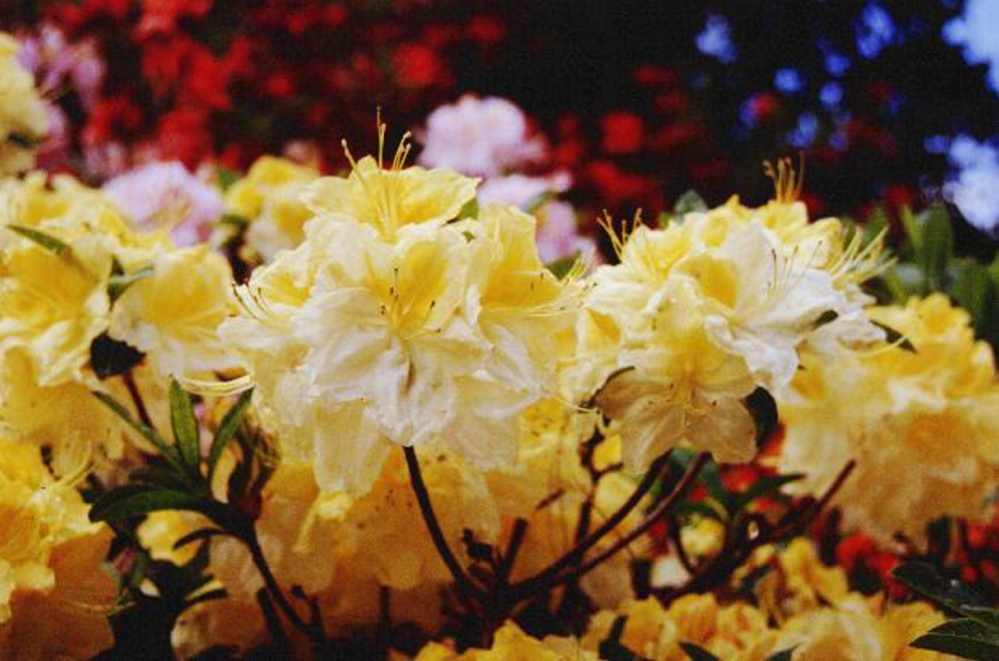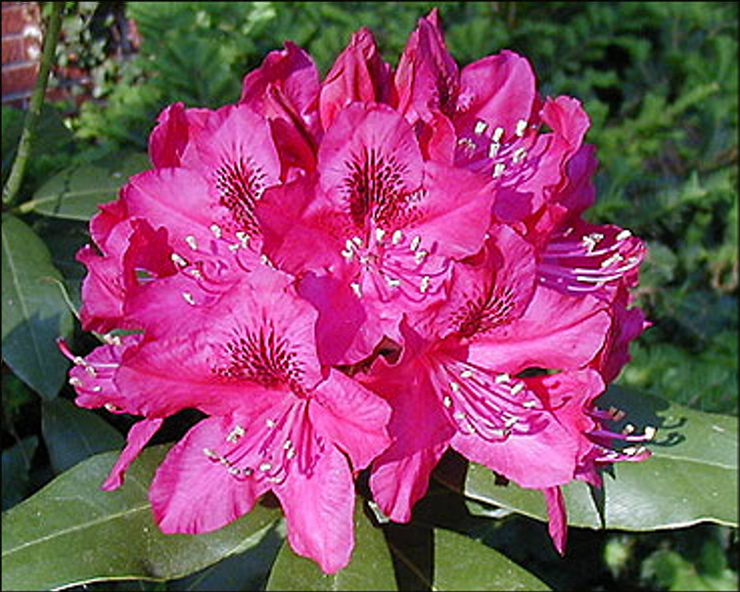Look around and it’s hard to miss that we are in the middle of the season for rhododendrons and azaleas – a family of plants that are part of almost every Maine garden.
The earliest of these shrubs bloomed a few weeks ago, with the brilliant lavender flowers of “PJM” rhododendrons – named for Peter J. Mezitt of Weston Nurseries in Massachusetts – visible almost constantly as you drove through the suburbs, and “Cornell Pink” azaleas, with their clear pink flowers on branches that have yet to produce leaves, less common but perhaps more striking.
Blooms in this family will continue until midsummer, but the plants are attractive even without their blossoms.
Rhododendron is the broader term for this family. All azaleas are rhododendrons. Azaleas are further divided into evergreen and deciduous, meaning that they drop their leaves in winter. Almost all rhododendrons are evergreen.
All azaleas and rhododendrons prefer slightly acidic soil, which is naturally found throughout most of Maine, and they will tolerate at least part shade; some will grow well in full shade. Unfortunately, they can suffer damage if exposed to full sun and wind in winter, a frequent occurrence if the rhododendron is used as an understory plant beneath trees. They enjoy the shade in the summer but come winter, without the overhead leaf cover, their leaves may get brown splotches from sun scorch.
Small-leaved rhododendrons include PJM and its relatives. The largest they will grow is about 6 feet tall. Many, including “Purple Gem” at just 1 foot tall, are smaller.
The PJM is popular because of its brilliance and hardiness (Zone 3, which covers all of Maine). In addition, although shade tolerant, it will grow in full sun in Maine without its leaves scalding; the leaves turn red in the fall and purple in the winter, providing year-round interest. Plant a few daffodils with your PJM and, since they bloom at the same time, that area of your yard will be gorgeous for two weeks.
If you want to step out of the norm and grow small-leafed rhododendrons other than PJM, you have plenty of options. Most are Zone 4 (all of Maine except far-north Aroostook County).
“Olga Mezitt,” a Cary Award winner in 2007, blooms a week later than PJM and has clear pink flowers.
“Aglo” has bright pink flowers, too. “Molly Fordham,” a hybrid cross with the native Carolina rhododendron, has white flowers and attractive foliage.
If you want to go native with small leaves, use Carolina rhododendron if you can find it, or the Labrador Tea rhododendron.
LARGE LEAVES, VARIED HEIGHTS
Large-leaved rhododendrons are the ones you remember from your grandmother’s yard, and they will be coming into bloom about now. The standard height is 8 feet, but there are compact forms as small as 3 feet.
For taller and also later-blooming rhododendrons, the choice is “Rosebay,” also called Rhododendron maximum, which grows 12 feet tall, has glossy leaves and produces white to pale pink flowers in late June to early July.
Pick your 8-foot rhododendrons depending on the color you want: “Roseum Elegans” is an old favorite, with lavender pink flowers and very hardy.
For purple, try “Purpureum Elegans,” for pink “Roseum Pink” or “English Roseum.”
One of our favorites is “Nova Zembla,” which has large red buds that open to rose blossoms and glossy foliage that really sets off the flowers.
For a yellow rhododendron, consider “Capistrano,” which is Zone 5, hardy in southern and coastal Maine.
Another choice for native rhododendrons is rhodora, which is deciduous and only 3 feet tall, producing pink flowers before the leaves come out in spring. Rhodora “Alba” has white blossoms. Both of these, aside from being desirable natives, are also so short you shouldn’t ever need to prune them.
AZALEA CHOICES
Deciduous azaleas are mostly Zone 4 and about 6 feet tall; they come in many colors and are often fragrant. Some, like Cornell Pink, bloom before their leaves come out, so they are especially striking in early to late April or early May. Others, like “Weston’s Innocence” and “Weston’s Sparkler,” bloom in July, after the leaves have emerged.
Exbury is one of the most popular series, and you will find it in orange, yellow and red.
If hardiness is your major concern, the University of Minnesota has produced the “Northern Lights” azalea series that withstands temperatures down to 40 below zero. The Northern Lights are not quite as bright as the Exburys but are still a nice change from the whites, purples and pinks of rhododendrons.
You have several options for native plants. Azalea periclymenoides grows to 6 feet tall and has fragrant white blooms with pink hues. Azalea vaseyi, in pink and white, bloom before their foliage; the leaves turn pink to purple in the fall. Swamp azalea, in white with pinkish hues and clear pink, blooms in late July and, not surprisingly from the name, prefers wet areas.
Evergreen azaleas are low-growing, mostly 3 feet, and especially susceptible to winter wind and sun damage, so they need protection. The blossoms come in shades of red, pink, purple and white.
An interesting innovation is the Bloomathon series from Proven Winners, but it is Zone 6 and suitable for only the warmest parts of Maine. They are supposed to bloom in May and again in July through August, providing color all season. But I’m waiting for reader reports about the hardiness of this series; I’ve killed enough marginal plants in my time that I’ve learned to wait a year or two and let someone else test them.
ABOUT THE WRITER
TOM ATWELL has been writing the Maine Gardener column since 2004. He is a freelance writer gardening in Cape Elizabeth. Contact him at 767-2297 or at tomatwell@me.com.
Send questions/comments to the editors.




Comments are no longer available on this story